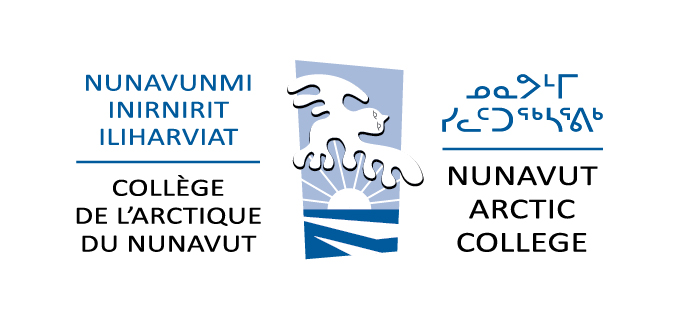Piqqusilirivvik is the Inuit Cultural Learning Facility with programs in Clyde River, Baker Lake and Igloolik.
A division of Nunavut Arctic College, Piqqusilirivvik is dedicated to enabling the transfer of traditional culture and knowledge, taught in the Inuit language and based on the guiding principles of Inuit Qaujimajatuqangit.
Our Vision
The role of Piqqusilirivvik within Nunavut is envisioned as a place of excellence that enriches and strengthens Inuit culture.
Our core classroom courses include:
Traditional Games
Making Drums
Drum dancing
Throat singing
Cabin building
Individual projects
Inuit Qaujimajatugangit
Survival
Hunting
Child Rearing
Kamik Making
Mitt Making
Contact Us
If you would like to apply, or would like more information about our programs, contact us! We want to hear from you! For more information:
Phone: 867-924-6071
Toll-Free: 1-866-979-7222
E-Mail: levi.palituq@arcticcollege.ca
Our History
With the establishment of Nunavut, there was an immediate expectation and hope that Inuit knowledge and language could become a greatly increased part of the education system.
In an effort to meet this expectation, a joint initiative was undertaken by the Government of Nunavut and Nunavut Tunngavik Incorporated, drawing on the experience in Greenland of the Knud Rasmussen Folk Højskole in Sisimiut.
The Knud Rasmussen Folk Højskole was established in 1962 to focus on Greenland’s language, values and culture. It set an example as a unique school, providing cultural and life-skills based learning for Greenlanders, in a residential setting.
A joint GN-NTI visit to Sisimiut in the winter of 2001 resulted in the signing of a letter of co-operation and the start of a planning group that included the GN Departments of Education and CLEY, and NTI. The idea of establishing some variation of the Greenlandic “Folk School” in Nunavut to provide education in Inuit language and culture was subsequently supported enthusiastically. At the 2004 full caucus meeting of the Nunavut Legislative Assembly (held in Arviat) an Inuit Cultural School was formally established as a high priority for the government. This led to a renewed planning effort (with the same three parties, Education, CLEY and NTI). A study was carried out to provide a guide, identifying the major issues to be examined, and a second trip to Sisimiut and the Knud Rasmussens Folk Højskole was carried out in the spring of 2005. CLEY ultimately took the lead on the project through a formal exchange of letters between the two Ministers.
After CLEY became responsible for the cultural school project a Steering Committee was established; bringing together the GN Departments of Education and CLEY, Nunavut Arctic College and NTI to examine options and ideas for such a school.
In April 2006, call letters to determine a building site were sent to all hamlets, Elders committees, DEAs, MLAs and NTI. Proposals were received from nine communities, from which four communities were considered to have stronger proposals based on the call letter criteria. On September 25, 2006 Cabinet selected the community of Clyde River as the site for the main campus of Piqqusilirivvik, and the communities of Baker Lake and Igloolik were selected to serve as satellite campuses that would also deliver cultural programs.
A series of consultations was arranged with Inuit elders from throughout Nunavut, to gain their input into the fundamental concepts for Piqqusilirivvik. Chief among those was the reality of using the land as a major learning learning/teaching environment, learning directly by observing and doing, and living together in a learning environment that was not limited by the ‘southern’ timetable or ‘9 to 5’ institutional framework. Many of the elders had worked in the ‘new school’ system as cultural instructors and all had stories of trips that were severely limited, held for only short periods of time – sometimes only a few hours – usually in perfect weather only and which often missed important learning opportunities for these reasons.
Activities should be governed by the seasons of the year, following traditional hunting and gathering patterns, with the connected knowledge flowing from and surrounding the activities. Students should learn to live together in a constructive and harmonious group, learning to resolve differences and discovering how to learn by example. The living environment should provide many opportunities to talk and listen, not just in formal classroom situations, but throughout the building(s) and throughout the day and evenings.
By 2007 this material was complied into a ‘Project Brief’, a document required to provide the collected vision and concepts to any designers or architects that might be interested in proposing a design. This made possible the call for proposals to design the new facility, and by April 2008, the competition had been completed and the successful firm, FSC Architects and Engineers, had been selected.
A number of meetings and concept development sessions were held, first in Iqaluit and then in Clyde River in June 2008, where significant input from members of the local community were provided and where the issue of site location was resolved. Further meetings reviewed the design development over the summer and fall of 2008, and the final drawings were delivered in February 2009.
Large construction projects in the Eastern Arctic depend on the annual sealift, during the limited open water season. The timing was tight but it proved possible to hold the competition for the construction contract, award it and have all the supplies ready for the shipping season by the end of June 2009. The actual construction began in Clyde River with the arrival of the supplies in late August. Construction continued throughout the next year and was completed, on schedule, in December 2010.
HOW TO APPLY
Download an Application Form (PDF). For more information on how to apply, visit your local campus or Community Learning Centre.




